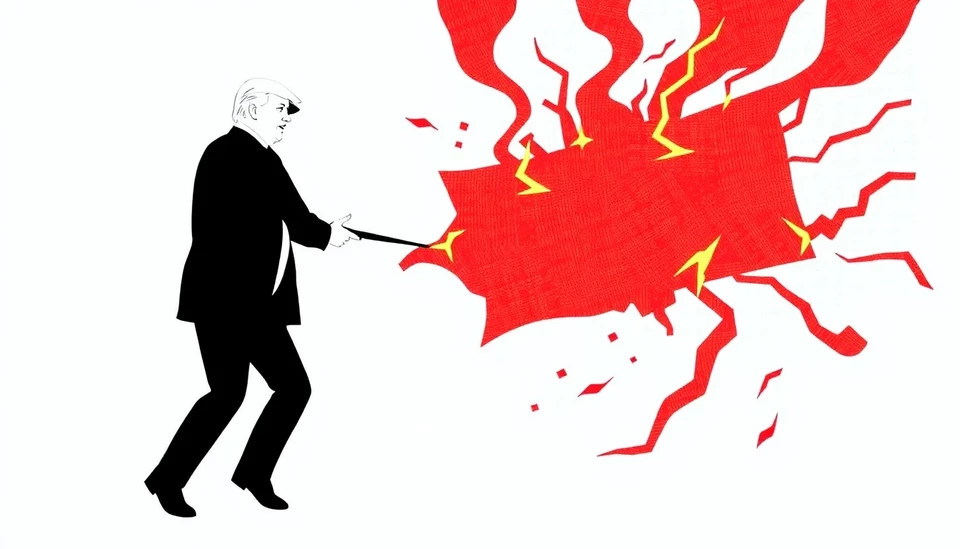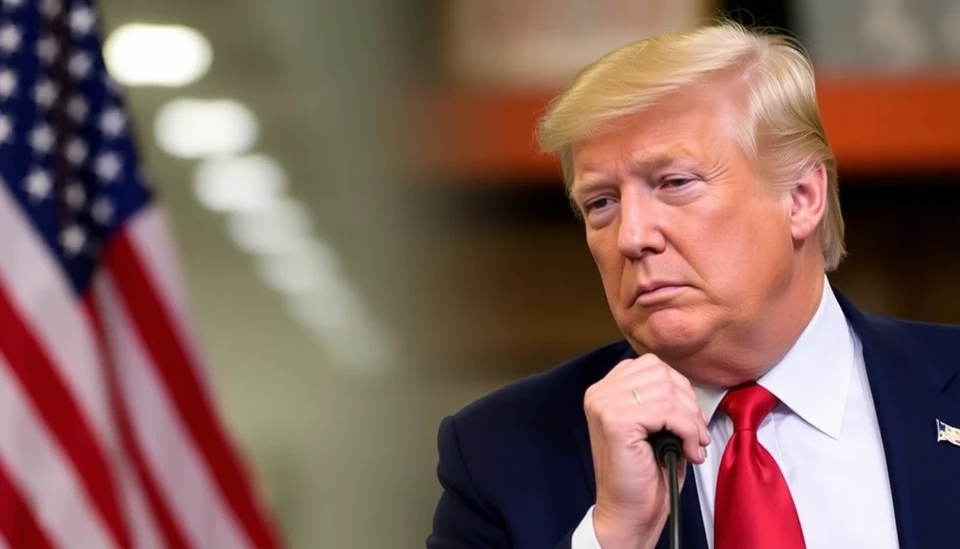
In an unexpected move that has sent shockwaves through global markets, former President Donald Trump has reactivated a series of tariffs that many thought had been largely put to rest after his administration. This decision comes as he continues to exert influence over the Republican Party and attempts to solidify his political base ahead of the 2024 Presidential Election. The reintroduction of these tariffs is raising questions about the broader economic implications, both domestically and internationally.
As businesses scramble to understand the ramifications of these tariffs, economists have raised concerns about inflationary pressures and its potential impact on consumer prices. With key sectors, including technology and automotive, heavily reliant on foreign imports, the chance of increased manufacturing costs looms large. Analysts warn that these tariffs could lead to higher prices for consumers, which might further strain household budgets already stretched thin by rising costs of living.
The tariffs are reportedly aimed at countries such as China, Mexico, and parts of the European Union, which have historically been viewed as economic competitors. Trump's rationale appears to be anchored in his administration's "America First" policy, which sought to protect U.S. jobs against overseas competition. However, critics argue that this strategy may backfire, leading to job losses in export sectors and exacerbating supply chain issues that have already been under severe strain since the pandemic.
Market reactions have been volatile since the announcement of the renewed tariffs. Stock prices in industries sensitive to trade, particularly those tied to manufacturing and retail, have experienced notable fluctuations. Investors are concerned about how the increased costs of imports will affect the earnings of major corporations, with many companies already cautioning about the diminished growth outlook for the remainder of the year.
Moreover, international relationships may also take a hit as countries affected by these tariffs could retaliate with their own measures, potentially triggering a trade war reminiscent of the tumultuous 2018-2019 period. Experts highlight that such a scenario could halt progress on trade agreements and diplomatic relations, leading to broader geopolitical tensions.
As Trump continues to communicate his tariffs as a means to reinstate American manufacturing superiority, experts are calling for a more nuanced conversation surrounding trade policy. The economic landscape, as it stands, is fraught with uncertainty, and the stakes are higher than ever. As politicians, business leaders, and the general public grapple with the potential fallout, one thing is clear: the path forward will require careful navigation to avoid exacerbating existing issues within the economy.
As the situation unfolds, stakeholders are advised to keep a close eye on policy developments and be prepared for rapid changes in economic conditions. The renewed tariff discourse serves as a stark reminder of the precarious balance of global trade relations, and just how easily such harmony can descend into chaos.
For those looking to understand the implications of Trump's tariff decisions more deeply, the conversation isn’t just about economics; it’s about the future direction of U.S. trade policy, the straining of international alliances, and the large-scale effects it may have on American livelihoods.
Follow us closely for further updates and in-depth analysis as this story continues to evolve.
#TrumpTariffs #TradeWar #Economy #Inflation #GlobalMarkets #PoliticalImpact #USChinaRelations #Manufacturing #2024Election
Author: Laura Mitchell




